Nerine Dorman's Blog, page 43
November 6, 2016
The Tawny Man Trilogy by Robin Hobb #review
The Tawny Man Trilogy by Robin Hobb
(Fool's Errand, The Golden Fool, Fool's Fate)
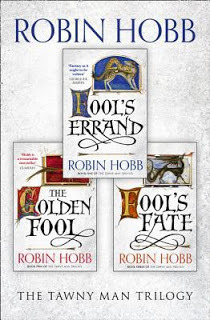 Where do I even begin? This year I credit my survival as being partially due to good friends and Robin Hobb's books, and The Tawny Man trilogy was key to my emotional and psychological well-being.
Where do I even begin? This year I credit my survival as being partially due to good friends and Robin Hobb's books, and The Tawny Man trilogy was key to my emotional and psychological well-being.
FitzChivalry Farseer is by far one of my favourite characters. Life has handed him a raw deal. Every time you think he's at the top of his game, or that things are finally going right for him, the metaphorical rug gets pulled out from beneath his feet.
We learn in this series more about his special relationship with the Fool, and how the two of them are responsible for setting the world to rights. You'd think that Fitz and Nighteyes would slip quietly into history after their high adventure and derring-do to wake dragons and save the Six Duchies from the Red Ship Raiders and a mad king. But no.
This is not the case.
Though Fitz considers himself old, and Nighteyes is even more so a venerable wolf who has long outlived his natural years, the two are dragged into fresh misadventure when they are sent to discover the fate of Queen Kettricken's son. As much as Fitz loathes politics and intrigue, he truly comes alive when he is thrust into the midst of it.
We learn much of how the Wit magic works, as not only do we discover a conspiracy of the Witted to seize power, but there is fresh concern over the fact that the missing Prince Dutiful is betrothed to an Outislander princess.
And there is what I call That Thing That Happens that astute readers would have understood implicitly is coming, is unavoidable, but Hobb sneaks it up on readers with such flair, with such awful dignity and precision that I had to put the book down and have a good, ugly cry for a quarter of an hour. Then I reread that scene again and had to go wash my face. The only other authors who've succeed in reducing me to a blubbering wreck are JRR Tolkien (I cry every time the elves return to the West) and of course Richard Adams's Watership Down.
Fitz and the Fool go on to have hectic adventures, travelling far afield on the trail of, yes... Dragons. While I do feel the pace does flag at times, and Hobb certainly (and rightfully so) is in no hurry to tell the tale, those hankering after fast-paced action may whinge a bit. (And yes, how I loathe those types of readers). This is a story where you let go and immerse for individual scenes, for the descriptions for the incredibly detailed cultural heritage she has constructed. Hobb's rich world-building, her well-realised, three-dimensional characters make this an unforgettable experience. And, of course, every exquisite detail. Pay attention when you read, because often it's the smallest, seemingly inconsequential details that later have earth-shattering ramifications.
This is a story about love, and what people are willing to do for the ones who are dear to them. It's about the secrets that turn around and bite them later; the sacrifices people make. Central to this is the triad of Fitz/The Fool/Nighteyes, and how the three are but parts of one complex character, or rather expressions of the same – a composite that has grown together. And yes, there are times when Hobb rips out your heart, just as she does with Fitz, but then she puts it back together again in the most unexpected ways to make you gasp and place a hand on your chest.
If ever there is an author who inspires me to do better as an author, it's Hobb. Sometimes authors don't stand the test of time; sometimes you return to their writing years later only to be disappointed horribly, (um hello, David Eddings). Not so with Hobb.
(Fool's Errand, The Golden Fool, Fool's Fate)
 Where do I even begin? This year I credit my survival as being partially due to good friends and Robin Hobb's books, and The Tawny Man trilogy was key to my emotional and psychological well-being.
Where do I even begin? This year I credit my survival as being partially due to good friends and Robin Hobb's books, and The Tawny Man trilogy was key to my emotional and psychological well-being.FitzChivalry Farseer is by far one of my favourite characters. Life has handed him a raw deal. Every time you think he's at the top of his game, or that things are finally going right for him, the metaphorical rug gets pulled out from beneath his feet.
We learn in this series more about his special relationship with the Fool, and how the two of them are responsible for setting the world to rights. You'd think that Fitz and Nighteyes would slip quietly into history after their high adventure and derring-do to wake dragons and save the Six Duchies from the Red Ship Raiders and a mad king. But no.
This is not the case.
Though Fitz considers himself old, and Nighteyes is even more so a venerable wolf who has long outlived his natural years, the two are dragged into fresh misadventure when they are sent to discover the fate of Queen Kettricken's son. As much as Fitz loathes politics and intrigue, he truly comes alive when he is thrust into the midst of it.
We learn much of how the Wit magic works, as not only do we discover a conspiracy of the Witted to seize power, but there is fresh concern over the fact that the missing Prince Dutiful is betrothed to an Outislander princess.
And there is what I call That Thing That Happens that astute readers would have understood implicitly is coming, is unavoidable, but Hobb sneaks it up on readers with such flair, with such awful dignity and precision that I had to put the book down and have a good, ugly cry for a quarter of an hour. Then I reread that scene again and had to go wash my face. The only other authors who've succeed in reducing me to a blubbering wreck are JRR Tolkien (I cry every time the elves return to the West) and of course Richard Adams's Watership Down.
Fitz and the Fool go on to have hectic adventures, travelling far afield on the trail of, yes... Dragons. While I do feel the pace does flag at times, and Hobb certainly (and rightfully so) is in no hurry to tell the tale, those hankering after fast-paced action may whinge a bit. (And yes, how I loathe those types of readers). This is a story where you let go and immerse for individual scenes, for the descriptions for the incredibly detailed cultural heritage she has constructed. Hobb's rich world-building, her well-realised, three-dimensional characters make this an unforgettable experience. And, of course, every exquisite detail. Pay attention when you read, because often it's the smallest, seemingly inconsequential details that later have earth-shattering ramifications.
This is a story about love, and what people are willing to do for the ones who are dear to them. It's about the secrets that turn around and bite them later; the sacrifices people make. Central to this is the triad of Fitz/The Fool/Nighteyes, and how the three are but parts of one complex character, or rather expressions of the same – a composite that has grown together. And yes, there are times when Hobb rips out your heart, just as she does with Fitz, but then she puts it back together again in the most unexpected ways to make you gasp and place a hand on your chest.
If ever there is an author who inspires me to do better as an author, it's Hobb. Sometimes authors don't stand the test of time; sometimes you return to their writing years later only to be disappointed horribly, (um hello, David Eddings). Not so with Hobb.
Published on November 06, 2016 12:05
October 23, 2016
Legend (1985) #movie
A young man must stop the Lord of Darkness from both destroying daylight and marrying the woman he loves.
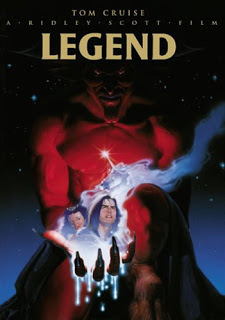 Every once in a while I have that one film or book or something or other that I've been meaning to read or watch for simply ages that I've just never gotten round to. Legend, the 1985 film directed by Ridley Scott, was one of them.
Every once in a while I have that one film or book or something or other that I've been meaning to read or watch for simply ages that I've just never gotten round to. Legend, the 1985 film directed by Ridley Scott, was one of them.
I've watched pretty much all the important 1980s fantasy films – Labyrinth, The Neverending Story, The Dark Crystal, Willow, Highlander, Ladyhawke... Just not Legend. And always, my husband said to me, "No, really, it's crap. Don't."
I never listen to him.
I eventually got my way to see the film on Netflix. I regret that I will not be able to get the 125 minutes of my life back. As much as I do attempt to give films the benefit of the doubt, I couldn't help but wonder, the entire time that I was watching, whether Scott and his crew had been taking some really mean hallucinogenics while in production.
Yes, this is a quest – young dude Jack (Tom Cruise in a really, really risqué golden tunic that leaves very little to the imagination) goes to rescue the princess Lily. There are unicorns. Tim Curry, of course, steals the show as what appears to be Hellboy's grandpappy. There are dwarves too. And Tinkerbell. Oh, did I mention unicorns?
In fact, everything hinges on the unicorns that will act as a sacrifice to ring in Eternal Darkness. Muhahahahahahaha.
Nothing makes sense while our intrepid, nattily garbed young hero prances about in his gilded togs waving a sword he clearly has no idea how to use. There was one, weird scene where a dark Lily dances with the Evil Overlord, which I thought was quite pretty and surreal, but as for the rest – I suspect it will make more sense to three-year-olds who've grown up on a fare of The Magic Roundabout and Teletubbies.
And seriously? What the ever-living fuck was with all the glitter? Glitter EVERYWHERE? The cast and production crew must've found glitter in their pubes for weeks after. Glitter is insidious that way. I suspect this film must've resulted global '85-'86 Glitter Shortage.
The blurb sums up this hot mess of a fantasy cinema entirely. I'd rather watch YouTube clips spliced together from the Tim Curry scenes again than ever endure this disjointed, cobbled-together "let's attempt epic fantasy though we don't have the first clue how the hell to make it work".
I guess if you're tripping off your tits, this film will be amazeballs, but alas I'll not be tripping off my tits again anytime soon and life's too short to endure something that left me feeling a whole lot of what the fuck.
 Every once in a while I have that one film or book or something or other that I've been meaning to read or watch for simply ages that I've just never gotten round to. Legend, the 1985 film directed by Ridley Scott, was one of them.
Every once in a while I have that one film or book or something or other that I've been meaning to read or watch for simply ages that I've just never gotten round to. Legend, the 1985 film directed by Ridley Scott, was one of them.I've watched pretty much all the important 1980s fantasy films – Labyrinth, The Neverending Story, The Dark Crystal, Willow, Highlander, Ladyhawke... Just not Legend. And always, my husband said to me, "No, really, it's crap. Don't."
I never listen to him.
I eventually got my way to see the film on Netflix. I regret that I will not be able to get the 125 minutes of my life back. As much as I do attempt to give films the benefit of the doubt, I couldn't help but wonder, the entire time that I was watching, whether Scott and his crew had been taking some really mean hallucinogenics while in production.
Yes, this is a quest – young dude Jack (Tom Cruise in a really, really risqué golden tunic that leaves very little to the imagination) goes to rescue the princess Lily. There are unicorns. Tim Curry, of course, steals the show as what appears to be Hellboy's grandpappy. There are dwarves too. And Tinkerbell. Oh, did I mention unicorns?
In fact, everything hinges on the unicorns that will act as a sacrifice to ring in Eternal Darkness. Muhahahahahahaha.
Nothing makes sense while our intrepid, nattily garbed young hero prances about in his gilded togs waving a sword he clearly has no idea how to use. There was one, weird scene where a dark Lily dances with the Evil Overlord, which I thought was quite pretty and surreal, but as for the rest – I suspect it will make more sense to three-year-olds who've grown up on a fare of The Magic Roundabout and Teletubbies.
And seriously? What the ever-living fuck was with all the glitter? Glitter EVERYWHERE? The cast and production crew must've found glitter in their pubes for weeks after. Glitter is insidious that way. I suspect this film must've resulted global '85-'86 Glitter Shortage.
The blurb sums up this hot mess of a fantasy cinema entirely. I'd rather watch YouTube clips spliced together from the Tim Curry scenes again than ever endure this disjointed, cobbled-together "let's attempt epic fantasy though we don't have the first clue how the hell to make it work".
I guess if you're tripping off your tits, this film will be amazeballs, but alas I'll not be tripping off my tits again anytime soon and life's too short to endure something that left me feeling a whole lot of what the fuck.
Published on October 23, 2016 06:25
Last Wish & The Gulf by Poppy Z Brite
Title:
Last Wish & The Gulf
Author: Poppy Z Brite
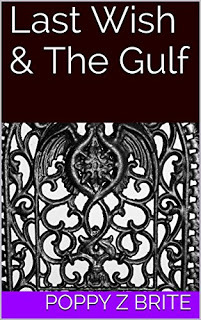 There are very few authors in the world who'll immediately make me drop everything I'm doing to go and purchase and read their work immediately, and Poppy Z Brite is one of them. Brite's writing was HUGELY influential on me when I was younger. He's not so much heavy on plot but more on atmosphere and description, with settings that are so tangible, you can smell the miasma of the river water and feel the stickiness of the grains of sand while you walk along the banks.
There are very few authors in the world who'll immediately make me drop everything I'm doing to go and purchase and read their work immediately, and Poppy Z Brite is one of them. Brite's writing was HUGELY influential on me when I was younger. He's not so much heavy on plot but more on atmosphere and description, with settings that are so tangible, you can smell the miasma of the river water and feel the stickiness of the grains of sand while you walk along the banks.
These two sort stories represent and ending and a beginning (I hope) as Brite hasn't released new fiction for a decade. "The Gulf" was the last piece he worked on before he went on a hiatus, and examines the sense of place that creeps into a person. Mired in nostalgia, it evokes environment and personal nostalgia in the aftermath of Katrina.
"Last Wish" is a deceptively simple flash piece with a wicked little hook at the end that made me gasp in delighted horror. It's short, it's nasty and it's *tight* and I truly hope that this marks the author's return to writing because this piece is *good*. The writing is tighter, has more punch than older works but features all the characteristic mood.
Brite remains my go-to for descriptive writing that paints a vivid, visceral environment.
Author: Poppy Z Brite
 There are very few authors in the world who'll immediately make me drop everything I'm doing to go and purchase and read their work immediately, and Poppy Z Brite is one of them. Brite's writing was HUGELY influential on me when I was younger. He's not so much heavy on plot but more on atmosphere and description, with settings that are so tangible, you can smell the miasma of the river water and feel the stickiness of the grains of sand while you walk along the banks.
There are very few authors in the world who'll immediately make me drop everything I'm doing to go and purchase and read their work immediately, and Poppy Z Brite is one of them. Brite's writing was HUGELY influential on me when I was younger. He's not so much heavy on plot but more on atmosphere and description, with settings that are so tangible, you can smell the miasma of the river water and feel the stickiness of the grains of sand while you walk along the banks.These two sort stories represent and ending and a beginning (I hope) as Brite hasn't released new fiction for a decade. "The Gulf" was the last piece he worked on before he went on a hiatus, and examines the sense of place that creeps into a person. Mired in nostalgia, it evokes environment and personal nostalgia in the aftermath of Katrina.
"Last Wish" is a deceptively simple flash piece with a wicked little hook at the end that made me gasp in delighted horror. It's short, it's nasty and it's *tight* and I truly hope that this marks the author's return to writing because this piece is *good*. The writing is tighter, has more punch than older works but features all the characteristic mood.
Brite remains my go-to for descriptive writing that paints a vivid, visceral environment.
Published on October 23, 2016 03:08
October 19, 2016
In Conversation with Ezeiyoke Chukwunonso
An anthology that's worth looking out for when it comes for available, Lights Out: Resurrection features a crop of African authors of horror and dark speculative fiction, edited by Wole Tabali. Today I welcome Ezeiyoke Chukwunoso for a little Q&A.
I realise we know very little about each other. Tell me more about you and what you love writing.

I am Ezeiyoke Chukwunonso, a charter member of African Speculative Society. My collection of short stories, Haunted Grave and Other Stories was published by Parallel Universe Publications during August this year. Prior to that, I have published stories in anthologies such as Emanation: 2+2=5, Emanation: Foray into Forever, Future Lovecraft, Lost Tales from the Mountain: Halloween Anthology Vol. II., African Roar and in so many other places. I was shortlisted in IdeasTap Inspires: Writers' Centre Norwich Writing competition, Ghana Poetry Prize, and Quickfox Poetry Competition.
I love to write horror, fantasy and science fiction stories although not hard sci-fi. I write literary fiction too but tend to love genre fiction more.
Apart from fiction writing, I am a literary critic and I investigate literature with the lens of a philosopher. I developed a penchant for this during my BA where I majored in philosophy. I discovered that most of contemporary African Literature is useful, functionalist. It is an art that has a socio-political or anthropological relevance. If it did not tend to fight colonialism, it was post-colonialism or it was written with a moral education in view. Practically, art for art's sake, aestheticism was an endangered species. Critics like Achebe, Senghor, Ngugi wa Thiong’o favoured this. Achebe said ‘I would be quite satisfied if my novels (especially the ones I set in the past) did no more than teach my readers that their past – with all its imperfections was not one long night of savagery from which the first Europeans acting on God’s behalf delivered them. Perhaps what I write is applied art as distinct from pure. But who cares?’ And I discovered that that sort of metaphysical assumption made literature predictable and more so hindered aestheticism and the development of genre fiction in Africa for a long time. My writing and research were to propose a better metaphysical assumption that will foster the growth of literature in which art for art sake is prior to functionalism. I have published essays about this in Episteme Journal, and Savvy Journal of Contemporary African Arts.
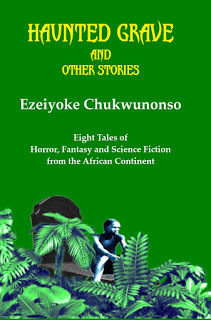 How does living in Africa inform your writing? Tell me more about your environment, and a day in your life.
How does living in Africa inform your writing? Tell me more about your environment, and a day in your life.
Most of my stories are based in Enugu State in Nigeria where I grew up. In as much as fiction relies on the imagination, I often like to write about setting I am familiar with, a place I can manipulate. I like to have a strong sense of a place in my writing. Apart from the setting, my writing is often influenced by the oral and mythical thoughts of the Igbo people in Nigeria, mainly with regard to religion. I have been fascinated with religion since I was a child, once I was in the seminary hoping to become a Catholic priest. *Laughing* Religion in Nigeria and its superstition still hooks me more than ever although now intellectually. And it is this superstition and the fear inherent in it that I explore often in my horror or fantasy writing.
I currently live in Manchester. My house is near a park. I love the park. I often sit there watching people playing with their dogs. I am still wondering why I haven’t owned a dog yet.What are you reading at the moment?
I am reading Making Wolf by Tade Thompson. I recently reviewed his Rosewater and I fall in love with his writing especially the pacing, quick page turning. Azanian Bridges by Nick Wood is what I am currently reading whenever I am commuting on the bus. I like reading on the bus, makes the journey quicker. I will be reviewing it soon. I just finished reading Dark Lullaby by Jessica Palmer, I am writing the review currently. Horrorology edited by Stephen Jones is on my bedside. I read bits of it to sleep.
Tell us more about your story as it appears in Lights Out: Resurrection.
"Eaters of Flesh" was inspired by a real event. A relative was undergoing a depression that came with some mental issue. There was this allusion among her family members that what was wrong with her was a demonic attack. Seeking for a scientific medical aid was taken out of the option. Anyway, she later met a psychologist, had a professional help and recovered. The incident, however, stayed with me and formed the basis for the story, "Eaters of Flesh". The story appeared first in my short story collection, Haunted Grave and Other Stories.
What are you writing at the moment?
I am working on my debut novel. The first chapter of the novel actually is the story that appeared in the Lights Out: Resurrection. In between the novel, I research on my philosophical essays on literature. I am writing a couple of short stories too.
I realise we know very little about each other. Tell me more about you and what you love writing.

I am Ezeiyoke Chukwunonso, a charter member of African Speculative Society. My collection of short stories, Haunted Grave and Other Stories was published by Parallel Universe Publications during August this year. Prior to that, I have published stories in anthologies such as Emanation: 2+2=5, Emanation: Foray into Forever, Future Lovecraft, Lost Tales from the Mountain: Halloween Anthology Vol. II., African Roar and in so many other places. I was shortlisted in IdeasTap Inspires: Writers' Centre Norwich Writing competition, Ghana Poetry Prize, and Quickfox Poetry Competition.
I love to write horror, fantasy and science fiction stories although not hard sci-fi. I write literary fiction too but tend to love genre fiction more.
Apart from fiction writing, I am a literary critic and I investigate literature with the lens of a philosopher. I developed a penchant for this during my BA where I majored in philosophy. I discovered that most of contemporary African Literature is useful, functionalist. It is an art that has a socio-political or anthropological relevance. If it did not tend to fight colonialism, it was post-colonialism or it was written with a moral education in view. Practically, art for art's sake, aestheticism was an endangered species. Critics like Achebe, Senghor, Ngugi wa Thiong’o favoured this. Achebe said ‘I would be quite satisfied if my novels (especially the ones I set in the past) did no more than teach my readers that their past – with all its imperfections was not one long night of savagery from which the first Europeans acting on God’s behalf delivered them. Perhaps what I write is applied art as distinct from pure. But who cares?’ And I discovered that that sort of metaphysical assumption made literature predictable and more so hindered aestheticism and the development of genre fiction in Africa for a long time. My writing and research were to propose a better metaphysical assumption that will foster the growth of literature in which art for art sake is prior to functionalism. I have published essays about this in Episteme Journal, and Savvy Journal of Contemporary African Arts.
 How does living in Africa inform your writing? Tell me more about your environment, and a day in your life.
How does living in Africa inform your writing? Tell me more about your environment, and a day in your life. Most of my stories are based in Enugu State in Nigeria where I grew up. In as much as fiction relies on the imagination, I often like to write about setting I am familiar with, a place I can manipulate. I like to have a strong sense of a place in my writing. Apart from the setting, my writing is often influenced by the oral and mythical thoughts of the Igbo people in Nigeria, mainly with regard to religion. I have been fascinated with religion since I was a child, once I was in the seminary hoping to become a Catholic priest. *Laughing* Religion in Nigeria and its superstition still hooks me more than ever although now intellectually. And it is this superstition and the fear inherent in it that I explore often in my horror or fantasy writing.
I currently live in Manchester. My house is near a park. I love the park. I often sit there watching people playing with their dogs. I am still wondering why I haven’t owned a dog yet.What are you reading at the moment?
I am reading Making Wolf by Tade Thompson. I recently reviewed his Rosewater and I fall in love with his writing especially the pacing, quick page turning. Azanian Bridges by Nick Wood is what I am currently reading whenever I am commuting on the bus. I like reading on the bus, makes the journey quicker. I will be reviewing it soon. I just finished reading Dark Lullaby by Jessica Palmer, I am writing the review currently. Horrorology edited by Stephen Jones is on my bedside. I read bits of it to sleep.
Tell us more about your story as it appears in Lights Out: Resurrection.
"Eaters of Flesh" was inspired by a real event. A relative was undergoing a depression that came with some mental issue. There was this allusion among her family members that what was wrong with her was a demonic attack. Seeking for a scientific medical aid was taken out of the option. Anyway, she later met a psychologist, had a professional help and recovered. The incident, however, stayed with me and formed the basis for the story, "Eaters of Flesh". The story appeared first in my short story collection, Haunted Grave and Other Stories.
What are you writing at the moment?
I am working on my debut novel. The first chapter of the novel actually is the story that appeared in the Lights Out: Resurrection. In between the novel, I research on my philosophical essays on literature. I am writing a couple of short stories too.
Published on October 19, 2016 09:42
October 17, 2016
In Conversation with Raymond Elenwoke
I've recently had the pleasure of being included in a horror anthology of fabulous African authors, Lights Out: Resurrection that was edited by Wole Talabi, so I thought I'd take a little time to get to know my fellow authors. Today it's Raymond Elenwoke who's over for a little Q&A...
 I realise we know very little about each other. Tell me more about you and what you love writing.
I realise we know very little about each other. Tell me more about you and what you love writing.
My name is Raymond Elenwoke, and I am a Nigerian writer. I am also an auditor and financial consultant, currently residing in Port Harcourt, Rivers State, Nigeria. I love writing stories that explore a variety of genres, mainly horror, thriller, speculative fiction and sci-fi.
How does living in Africa inform your writing? Tell me more about your environment, and a day in your life.
For me, the phrase “living in Africa” feels very vague, because Africa is too big and diverse to be classified as a single place. I live in Port Harcourt in Rivers State, Nigeria, and even then, living there is very different from living in, say, Elele, in the same Rivers State, because these towns/cities have very distinct personalities.
Having said that, living in Port Harcourt is an exercise in patience, both with yourself and your environment. This has affected my writing in more ways than one. In the sense that I am (still) learning to infuse the identity of the town I set my stories into the story, no matter the genre. My environment helps inform my thinking, both in terms of character development and in terms of setting. Being someone who learned his trade from consuming books and writing advice from foreign (Western) authors/movies, living in Port Harcourt helps me realise that the police procedures in Phoenix, Arizona or Luton, United Kingdom are very different from the police procedures in Port Harcourt, Nigeria. This helps me also realise that my characters will have certain challenges unique to not just the environment in which I set them, but also unique to the culture of the place AND time the story is set in.
My environment is quite dynamic. I may start the day at my desk and end it in a client’s office halfway across town, or in class, studying for my professional exams. My day usually starts at about 4.30 am, and after my morning devotion, I have to study for a bit before training/exercising for a few minutes, and then leaving the house for work. If I get to work early enough, I can write a bit, if not I have to wait until the close of work to be able to let my imagination run wild. In between this, when I am on break I could read a story or two, or watch a show to relax.
What are you reading at the moment?
At the moment, I am studying for the final round of my professional exams, so this has limited my literature reading time. However, one I am reading now is Breakers by Edward W Robertson, which is a surprisingly good book about the end of the world. Before this I read the amazing Doctor Sleep by the effervescent Stephen King, and I also reviewed the excellent Rosewater by Tade Thompson, published by Apex Publications, the smartest story about an alien invasion I have ever come across. Pre-order it as it comes out in November 15, 2016. You can read my review of it here .
So is it courage or strength, And is that what I’m waiting for… I once said Rosewater would make me wax lyrica...
In addition to my professional reading, I am reading, you guessed it, Lights Out: Resurrection. Amazing collection. Seriously.
Tell us more about your story as it appears in Lights Out: Resurrection.
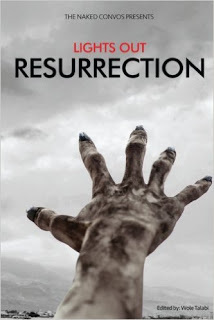 My story is titled "Koi-Koi". The title is derived from the sound any person who attended Boarding School in Nigeria will most likely recognise. The story revolves around Lady Koi Koi, the Secondary School Legend.
My story is titled "Koi-Koi". The title is derived from the sound any person who attended Boarding School in Nigeria will most likely recognise. The story revolves around Lady Koi Koi, the Secondary School Legend.
When I was approached to write a story for the collection, I had no idea what I was going to write, to be honest. I saw the email on Monday morning at the office, and realised that I had until Friday to write and submit a story. Even though I had nothing, I joyfully accepted the story, because I had been waiting for the literary event. I had a story that had been swimming beneath the surface,so I started writing. 80% into the story and about two to the deadline, I realised this was not the story for the collection, so I left it unfinished, and spent most of the day letting the story tell itself to me. When it was ready, I set about discovering it.
Koi-Koi is an imagining of origin of the Lady Koi Koi mythos, because why not? When I first heard the tale, all I could picture were legs in a pair of black heels. No body. Just from the knees down. There were more ghostly/supernatural tales from my time to choose from, but this one…this one had a silent menace about it. You always seemed to hear it, only in the dark, only at night, but you never saw it. Those who did…well, I would imagine they were either dead or too far gone t really tell us about their experience….
*sinister laugh*
What are you writing at the moment?
At the moment, I am working on a number of projects.
First off I am working on a serial story I started writing when I was studying in London a few years back. It is time for the story to come home.
I am also working jointly on a project with another amazing writer friend of mine, Seun Odukoya. The project involves Sango and Amadioha, the Yoruba and Igbo gods of thunder.
I am also finishing my novel, Rising Night, a story that has detectives, angels, demons and yes, ninjas.
 I realise we know very little about each other. Tell me more about you and what you love writing.
I realise we know very little about each other. Tell me more about you and what you love writing.My name is Raymond Elenwoke, and I am a Nigerian writer. I am also an auditor and financial consultant, currently residing in Port Harcourt, Rivers State, Nigeria. I love writing stories that explore a variety of genres, mainly horror, thriller, speculative fiction and sci-fi.
How does living in Africa inform your writing? Tell me more about your environment, and a day in your life.
For me, the phrase “living in Africa” feels very vague, because Africa is too big and diverse to be classified as a single place. I live in Port Harcourt in Rivers State, Nigeria, and even then, living there is very different from living in, say, Elele, in the same Rivers State, because these towns/cities have very distinct personalities.
Having said that, living in Port Harcourt is an exercise in patience, both with yourself and your environment. This has affected my writing in more ways than one. In the sense that I am (still) learning to infuse the identity of the town I set my stories into the story, no matter the genre. My environment helps inform my thinking, both in terms of character development and in terms of setting. Being someone who learned his trade from consuming books and writing advice from foreign (Western) authors/movies, living in Port Harcourt helps me realise that the police procedures in Phoenix, Arizona or Luton, United Kingdom are very different from the police procedures in Port Harcourt, Nigeria. This helps me also realise that my characters will have certain challenges unique to not just the environment in which I set them, but also unique to the culture of the place AND time the story is set in.
My environment is quite dynamic. I may start the day at my desk and end it in a client’s office halfway across town, or in class, studying for my professional exams. My day usually starts at about 4.30 am, and after my morning devotion, I have to study for a bit before training/exercising for a few minutes, and then leaving the house for work. If I get to work early enough, I can write a bit, if not I have to wait until the close of work to be able to let my imagination run wild. In between this, when I am on break I could read a story or two, or watch a show to relax.
What are you reading at the moment?
At the moment, I am studying for the final round of my professional exams, so this has limited my literature reading time. However, one I am reading now is Breakers by Edward W Robertson, which is a surprisingly good book about the end of the world. Before this I read the amazing Doctor Sleep by the effervescent Stephen King, and I also reviewed the excellent Rosewater by Tade Thompson, published by Apex Publications, the smartest story about an alien invasion I have ever come across. Pre-order it as it comes out in November 15, 2016. You can read my review of it here .
So is it courage or strength, And is that what I’m waiting for… I once said Rosewater would make me wax lyrica...
In addition to my professional reading, I am reading, you guessed it, Lights Out: Resurrection. Amazing collection. Seriously.
Tell us more about your story as it appears in Lights Out: Resurrection.
 My story is titled "Koi-Koi". The title is derived from the sound any person who attended Boarding School in Nigeria will most likely recognise. The story revolves around Lady Koi Koi, the Secondary School Legend.
My story is titled "Koi-Koi". The title is derived from the sound any person who attended Boarding School in Nigeria will most likely recognise. The story revolves around Lady Koi Koi, the Secondary School Legend.When I was approached to write a story for the collection, I had no idea what I was going to write, to be honest. I saw the email on Monday morning at the office, and realised that I had until Friday to write and submit a story. Even though I had nothing, I joyfully accepted the story, because I had been waiting for the literary event. I had a story that had been swimming beneath the surface,so I started writing. 80% into the story and about two to the deadline, I realised this was not the story for the collection, so I left it unfinished, and spent most of the day letting the story tell itself to me. When it was ready, I set about discovering it.
Koi-Koi is an imagining of origin of the Lady Koi Koi mythos, because why not? When I first heard the tale, all I could picture were legs in a pair of black heels. No body. Just from the knees down. There were more ghostly/supernatural tales from my time to choose from, but this one…this one had a silent menace about it. You always seemed to hear it, only in the dark, only at night, but you never saw it. Those who did…well, I would imagine they were either dead or too far gone t really tell us about their experience….
*sinister laugh*
What are you writing at the moment?
At the moment, I am working on a number of projects.
First off I am working on a serial story I started writing when I was studying in London a few years back. It is time for the story to come home.
I am also working jointly on a project with another amazing writer friend of mine, Seun Odukoya. The project involves Sango and Amadioha, the Yoruba and Igbo gods of thunder.
I am also finishing my novel, Rising Night, a story that has detectives, angels, demons and yes, ninjas.
Published on October 17, 2016 09:04
September 6, 2016
The Rise of African Speculative Fiction – in conversation with Geoff Ryman and Tade Thompson
A while back I let on that I'm one of the South African spokespeeps for the newly unveiled African Speculative Fiction Society. I'm going to kick off here and say that it's about high time that we got the ball rolling here in Africa. We have a vast oral tradition, not to mention a melting pot of cultures that are all uniquely African, and for too long we've been languishing under the misconception that African SFF fiction is somehow subpar. Point is it's not. When I edited Short Story Day Africa's
Terra Incognita
anthology, I was blown away by the beautiful wordsmiths and their stories I encountered.
Those of you who've been following my doings over the past few years will see how I've been fighting for the recognition of African SFF fiction here in my corner for what feels like forever. And let me tell you it's absolutely awesome to have others with whom I can now connect.
So, when Geoff Ryman roped me into the ASFS to help with the establishment of Africa's own speculative fiction awards, the Nommos, I jumped at the opportunity. Here's something I'm really passionate about, and I'm really happy to have my fellow ASFS folks over today (Geoff Ryman and Tade Thompson) to chat about this endeavour.
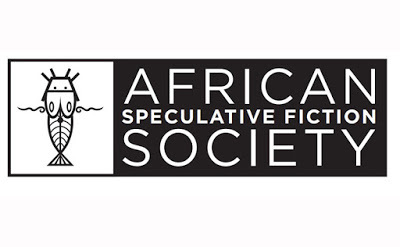 Nerine Dorman: I was a bit taken aback to be asked to get involved with the ASFS, mainly because I feel I've been fighting in the trenches here in my particular corner of Africa to try promote speculative fiction. What was the final tipping point for you to decide to get involved to help set up the Nommos?
Nerine Dorman: I was a bit taken aback to be asked to get involved with the ASFS, mainly because I feel I've been fighting in the trenches here in my particular corner of Africa to try promote speculative fiction. What was the final tipping point for you to decide to get involved to help set up the Nommos?
Geoff Ryman: You know, I have no memory what kicked it off. I was was reading stuff on the African Fantasy Reading Group and just thought 'sod it, we need an award and it will have to be entirely in Africa. Just keep everybody else out, me included. I had just come back from Nairobi and had loved the writers there, their mood of owing so little to everybody else, just growing their own wild sort of beatnik scene. And I was very impressed talking to Moses Kilolo and Richard Oduor Oduku, how they had got Jalada together by talking through all the issues first. So I just starting chatting online with the group, and all those good people who formed the Awards Discussion Group came on board. At first its was difficult. We all came with assumptions about how it would work and insecurities. Sometimes it seemed like we had all agreed only to have that agreement unravel. We took the discussion out of the open reading group and made it a private message group but it never got too heated... the odd hot moment. But we came up with some lovely stuff. The definitions of different kinds of Africans. The realisation we didn't want a panel of experts choosing for us, nor did we want a fan voting award like the Hugos, which had been in trouble.
I really really wanted it to be in the gift of the African Fantasy Reading Group – but I had to admit that even in my view the Nebula Awards which allow the writers to nominate and then to vote the winners seems a really good model. At that point we all got excited about the possibilities of a pro and semi-pro African SF body in terms of other things that are needed. Like. A really good critical review of Arican SFF. Like, an outreach to French, Portuguese, Arabic SFF and most especially to local language SFF. The conversations were thrilling because you could really feel the whole thing come together. Yes! This is going to WORK! The other thing was sending out the invitations to get a solid core of invited members to make sure that there really WAS an society... though it was the needs of the URL that finally settled the name. The other great moment was when we saw Stephen Embleton's designs for the leaflet and website and thought YEAH. And the the thrill when Ivor Hartmann told us Tom Ilube had promised four years of prize money. So many exciting, fun, moments. I'm an old guy and I'm really lucky to be part of something this enrolling at this stage of my life.
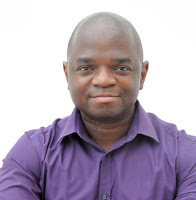 Tade Thompson: I just took a look at the original Nommo Awards discussion and there are over 3500 messages. A lot of people contributed including Wole Talabi, Masimba Musodza, Shadrek Chikoti, Ayodele Arigbabu, Mame Diene and more. Sometimes individuals had to take a time out from the discussions (I know I did), and others did not return. It's not an easy thing to come to a compromise. I don't see the heated nature of the discussions as a negative thing. To me it meant everybody was thinking and voices were not being silenced. One of my concerns was for the prize to avoid funding from the West, for example. Piper, tune, you know what I mean. The definition of what was an African we found particularly problematic. Hopefully, we've come up with a working definition.
Tade Thompson: I just took a look at the original Nommo Awards discussion and there are over 3500 messages. A lot of people contributed including Wole Talabi, Masimba Musodza, Shadrek Chikoti, Ayodele Arigbabu, Mame Diene and more. Sometimes individuals had to take a time out from the discussions (I know I did), and others did not return. It's not an easy thing to come to a compromise. I don't see the heated nature of the discussions as a negative thing. To me it meant everybody was thinking and voices were not being silenced. One of my concerns was for the prize to avoid funding from the West, for example. Piper, tune, you know what I mean. The definition of what was an African we found particularly problematic. Hopefully, we've come up with a working definition.
ND: What makes African speculative fiction unique, in your opinion? I've found through my editing that Africa's rich oral tradition of telling folk stories has a habit of creeping in and flavouring rather beautifully. This was particularly apparent when I was working on SSDA's Terra Incognita anthology.
GR: God, so many things make it unique... its relationship to the West, its relationship to the traditional cultures, the fantastic cultural diversity. The power that comes from being where the action is... that's where the novel goes always, and Africa is where the action is right now. In the West people explore tensions between conflicting ways of being like religion VERSUS science. In Africa monotheism, trad beliefs, science all share the same space like butterflies on a bougainvillea. It's about overlap and co-existence, not stress. Also Africans in our out of diaspora just do not do genre.
They write crime and fantasy, paint, make films, graphic design, are in a band and they do it all well.
The great untapped source of voice, difference, interest is language. Africans have just his second stopped looking to the West for validation, writing in a style that the West can understand. Stay tuned for flavourful prose more related to Sheng, Pidgin, Kiswahili or translations into English form material imagined in the language of the people who live it. So, language, which in the end equals diversity.
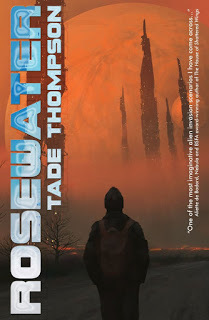 TT: From my perspective, developing African SFF needs at least three elements: Respectable awards, a tradition of magazines to serve as venues for emerging talent, and a healthy publishing industry. Omenana (to me) opens the magazine tradition up. The Nommos should help give people something to aspire to.
TT: From my perspective, developing African SFF needs at least three elements: Respectable awards, a tradition of magazines to serve as venues for emerging talent, and a healthy publishing industry. Omenana (to me) opens the magazine tradition up. The Nommos should help give people something to aspire to.
The ASFS helps to unite people like you, Nerine, and Chinelo for example, who have been fighting individually to raise the SFF profile on the continent. I think together we can get more done.
To me there should not be "African" sci-fi/fantasy any more than there should be an "African" writer. None of those qualifications should be necessary. We are just writers of SFF who have a relationship with the continent. Individually, we often have relationships with other places as well (for example, I have equal roots in South London). There is also a conflation of African SFF with Afrofuturism that I see sometimes in articles, blog posts etc. They are not the same thing, although there are areas of intersection.
ND: What are some of the long-term goals you foresee for the ASFS and speculative fiction on the continent in general?
GR: An anthology of nominated works. A programme with the French, Arabic, Portuguese and local language worlds. Publications in Luo on one page facing the page of English translation so that local languages can be sold bound in with the English. An expanding awards programme to recognise the outstanding auteur cinema springing up outside and maybe inside Nollywood. A searchable database of published novels, stories, graphic novels. A programme of Wikipedia maintenance to keep everybody's bios and bibliographies available and accurate. Programmes to encourage developing writer. BUT ABOVE ALL ELSE. Developing the audience in terms of both numbers and its expectations. Giving African writers Africans to write for, in genres that are controlled by African readers. So I hope the pros don't leave behind the 1000+ African Readers on Facebook. I hope both groups grow together, readers and writers. They are on the same side.
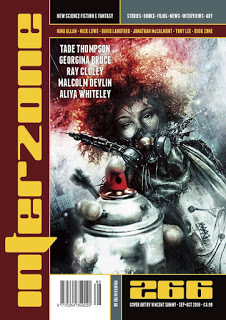 TT: African speculative fiction or African Sci-Fi/Fantasy isn't unique. It is writers exploring the imagination and writing fantastical fiction either emanating from science or the mystical (or both), taking their environment and cultural reality into consideration. This is exactly what SFF writers do everywhere. In this regard, there is no difference between Nnedi Okorafor, Aliette de Bodard and Cordwainer Smith. That the cultures from which the writers emerge have differences does not matter. Storytelling differences can reflect cultures, but that's to be expected. When I started reading Haruki Murakami my mind all but exploded. I never thought, though, that I'm reading "A Japanese Writer". To me part of the job of the ASFS is to demonstrate that we're here and we're like SFF writers everywhere, to bring fucking quality to the party, and mindpain to the haters!
TT: African speculative fiction or African Sci-Fi/Fantasy isn't unique. It is writers exploring the imagination and writing fantastical fiction either emanating from science or the mystical (or both), taking their environment and cultural reality into consideration. This is exactly what SFF writers do everywhere. In this regard, there is no difference between Nnedi Okorafor, Aliette de Bodard and Cordwainer Smith. That the cultures from which the writers emerge have differences does not matter. Storytelling differences can reflect cultures, but that's to be expected. When I started reading Haruki Murakami my mind all but exploded. I never thought, though, that I'm reading "A Japanese Writer". To me part of the job of the ASFS is to demonstrate that we're here and we're like SFF writers everywhere, to bring fucking quality to the party, and mindpain to the haters!
BIOS
GEOFF RYMAN is senior lecturer in School of Arts, Languages and Cultures at the University of Manchester. He is the author of several works of science fiction and literary fiction as well as short stories author and an interactive web novel. His work has won numerous awards including the John W. Campbell Memorial Award, the Arthur C. Clarke Award (twice), the James W. Tiptree Memorial Award, the Philip K. Dick Memorial Award, and the British Science Fiction Association Award (twice) and the Canadian Sunburst Award (twice). In 2012 he won a Nebula Award for his Nigeria-set novelette 'What We Found'. His novel AIR was listed in THE GUARDIAN's 1000 Novels You Must Read. 253 is listed by Carmen Maria Machado on the GRANTA website as the best book of 1998.
He has a Leverhulme International Academic Fellowship to research the rise of science fiction and fantasy in Africa. He also organises two reading groups of mainstream African Fiction, both called ARG! One meets in London the first Sunday of every month 4.30 pm at BOOK AND KITCHEN bookshop. The Manchester Group meets the third Tuesday 6.30 pm at HABESHA restaurant.
TADE THOMPSON lives and works in the south of England. His background is in medicine, psychiatry and anthropology. His first novel MAKING WOLF won the Golden Tentacle Award at The Kitshies. His most recent works are the short story THE APOLOGISTS in Interzone #266, DECOMMISSIONED in the NewCon Press anthology 'Crises and Conflicts', and the novel ROSEWATER from Apex Books.
Those of you who've been following my doings over the past few years will see how I've been fighting for the recognition of African SFF fiction here in my corner for what feels like forever. And let me tell you it's absolutely awesome to have others with whom I can now connect.
So, when Geoff Ryman roped me into the ASFS to help with the establishment of Africa's own speculative fiction awards, the Nommos, I jumped at the opportunity. Here's something I'm really passionate about, and I'm really happy to have my fellow ASFS folks over today (Geoff Ryman and Tade Thompson) to chat about this endeavour.
 Nerine Dorman: I was a bit taken aback to be asked to get involved with the ASFS, mainly because I feel I've been fighting in the trenches here in my particular corner of Africa to try promote speculative fiction. What was the final tipping point for you to decide to get involved to help set up the Nommos?
Nerine Dorman: I was a bit taken aback to be asked to get involved with the ASFS, mainly because I feel I've been fighting in the trenches here in my particular corner of Africa to try promote speculative fiction. What was the final tipping point for you to decide to get involved to help set up the Nommos?Geoff Ryman: You know, I have no memory what kicked it off. I was was reading stuff on the African Fantasy Reading Group and just thought 'sod it, we need an award and it will have to be entirely in Africa. Just keep everybody else out, me included. I had just come back from Nairobi and had loved the writers there, their mood of owing so little to everybody else, just growing their own wild sort of beatnik scene. And I was very impressed talking to Moses Kilolo and Richard Oduor Oduku, how they had got Jalada together by talking through all the issues first. So I just starting chatting online with the group, and all those good people who formed the Awards Discussion Group came on board. At first its was difficult. We all came with assumptions about how it would work and insecurities. Sometimes it seemed like we had all agreed only to have that agreement unravel. We took the discussion out of the open reading group and made it a private message group but it never got too heated... the odd hot moment. But we came up with some lovely stuff. The definitions of different kinds of Africans. The realisation we didn't want a panel of experts choosing for us, nor did we want a fan voting award like the Hugos, which had been in trouble.
I really really wanted it to be in the gift of the African Fantasy Reading Group – but I had to admit that even in my view the Nebula Awards which allow the writers to nominate and then to vote the winners seems a really good model. At that point we all got excited about the possibilities of a pro and semi-pro African SF body in terms of other things that are needed. Like. A really good critical review of Arican SFF. Like, an outreach to French, Portuguese, Arabic SFF and most especially to local language SFF. The conversations were thrilling because you could really feel the whole thing come together. Yes! This is going to WORK! The other thing was sending out the invitations to get a solid core of invited members to make sure that there really WAS an society... though it was the needs of the URL that finally settled the name. The other great moment was when we saw Stephen Embleton's designs for the leaflet and website and thought YEAH. And the the thrill when Ivor Hartmann told us Tom Ilube had promised four years of prize money. So many exciting, fun, moments. I'm an old guy and I'm really lucky to be part of something this enrolling at this stage of my life.
 Tade Thompson: I just took a look at the original Nommo Awards discussion and there are over 3500 messages. A lot of people contributed including Wole Talabi, Masimba Musodza, Shadrek Chikoti, Ayodele Arigbabu, Mame Diene and more. Sometimes individuals had to take a time out from the discussions (I know I did), and others did not return. It's not an easy thing to come to a compromise. I don't see the heated nature of the discussions as a negative thing. To me it meant everybody was thinking and voices were not being silenced. One of my concerns was for the prize to avoid funding from the West, for example. Piper, tune, you know what I mean. The definition of what was an African we found particularly problematic. Hopefully, we've come up with a working definition.
Tade Thompson: I just took a look at the original Nommo Awards discussion and there are over 3500 messages. A lot of people contributed including Wole Talabi, Masimba Musodza, Shadrek Chikoti, Ayodele Arigbabu, Mame Diene and more. Sometimes individuals had to take a time out from the discussions (I know I did), and others did not return. It's not an easy thing to come to a compromise. I don't see the heated nature of the discussions as a negative thing. To me it meant everybody was thinking and voices were not being silenced. One of my concerns was for the prize to avoid funding from the West, for example. Piper, tune, you know what I mean. The definition of what was an African we found particularly problematic. Hopefully, we've come up with a working definition.ND: What makes African speculative fiction unique, in your opinion? I've found through my editing that Africa's rich oral tradition of telling folk stories has a habit of creeping in and flavouring rather beautifully. This was particularly apparent when I was working on SSDA's Terra Incognita anthology.
GR: God, so many things make it unique... its relationship to the West, its relationship to the traditional cultures, the fantastic cultural diversity. The power that comes from being where the action is... that's where the novel goes always, and Africa is where the action is right now. In the West people explore tensions between conflicting ways of being like religion VERSUS science. In Africa monotheism, trad beliefs, science all share the same space like butterflies on a bougainvillea. It's about overlap and co-existence, not stress. Also Africans in our out of diaspora just do not do genre.
They write crime and fantasy, paint, make films, graphic design, are in a band and they do it all well.
The great untapped source of voice, difference, interest is language. Africans have just his second stopped looking to the West for validation, writing in a style that the West can understand. Stay tuned for flavourful prose more related to Sheng, Pidgin, Kiswahili or translations into English form material imagined in the language of the people who live it. So, language, which in the end equals diversity.
 TT: From my perspective, developing African SFF needs at least three elements: Respectable awards, a tradition of magazines to serve as venues for emerging talent, and a healthy publishing industry. Omenana (to me) opens the magazine tradition up. The Nommos should help give people something to aspire to.
TT: From my perspective, developing African SFF needs at least three elements: Respectable awards, a tradition of magazines to serve as venues for emerging talent, and a healthy publishing industry. Omenana (to me) opens the magazine tradition up. The Nommos should help give people something to aspire to. The ASFS helps to unite people like you, Nerine, and Chinelo for example, who have been fighting individually to raise the SFF profile on the continent. I think together we can get more done.
To me there should not be "African" sci-fi/fantasy any more than there should be an "African" writer. None of those qualifications should be necessary. We are just writers of SFF who have a relationship with the continent. Individually, we often have relationships with other places as well (for example, I have equal roots in South London). There is also a conflation of African SFF with Afrofuturism that I see sometimes in articles, blog posts etc. They are not the same thing, although there are areas of intersection.
ND: What are some of the long-term goals you foresee for the ASFS and speculative fiction on the continent in general?
GR: An anthology of nominated works. A programme with the French, Arabic, Portuguese and local language worlds. Publications in Luo on one page facing the page of English translation so that local languages can be sold bound in with the English. An expanding awards programme to recognise the outstanding auteur cinema springing up outside and maybe inside Nollywood. A searchable database of published novels, stories, graphic novels. A programme of Wikipedia maintenance to keep everybody's bios and bibliographies available and accurate. Programmes to encourage developing writer. BUT ABOVE ALL ELSE. Developing the audience in terms of both numbers and its expectations. Giving African writers Africans to write for, in genres that are controlled by African readers. So I hope the pros don't leave behind the 1000+ African Readers on Facebook. I hope both groups grow together, readers and writers. They are on the same side.
 TT: African speculative fiction or African Sci-Fi/Fantasy isn't unique. It is writers exploring the imagination and writing fantastical fiction either emanating from science or the mystical (or both), taking their environment and cultural reality into consideration. This is exactly what SFF writers do everywhere. In this regard, there is no difference between Nnedi Okorafor, Aliette de Bodard and Cordwainer Smith. That the cultures from which the writers emerge have differences does not matter. Storytelling differences can reflect cultures, but that's to be expected. When I started reading Haruki Murakami my mind all but exploded. I never thought, though, that I'm reading "A Japanese Writer". To me part of the job of the ASFS is to demonstrate that we're here and we're like SFF writers everywhere, to bring fucking quality to the party, and mindpain to the haters!
TT: African speculative fiction or African Sci-Fi/Fantasy isn't unique. It is writers exploring the imagination and writing fantastical fiction either emanating from science or the mystical (or both), taking their environment and cultural reality into consideration. This is exactly what SFF writers do everywhere. In this regard, there is no difference between Nnedi Okorafor, Aliette de Bodard and Cordwainer Smith. That the cultures from which the writers emerge have differences does not matter. Storytelling differences can reflect cultures, but that's to be expected. When I started reading Haruki Murakami my mind all but exploded. I never thought, though, that I'm reading "A Japanese Writer". To me part of the job of the ASFS is to demonstrate that we're here and we're like SFF writers everywhere, to bring fucking quality to the party, and mindpain to the haters!BIOS
GEOFF RYMAN is senior lecturer in School of Arts, Languages and Cultures at the University of Manchester. He is the author of several works of science fiction and literary fiction as well as short stories author and an interactive web novel. His work has won numerous awards including the John W. Campbell Memorial Award, the Arthur C. Clarke Award (twice), the James W. Tiptree Memorial Award, the Philip K. Dick Memorial Award, and the British Science Fiction Association Award (twice) and the Canadian Sunburst Award (twice). In 2012 he won a Nebula Award for his Nigeria-set novelette 'What We Found'. His novel AIR was listed in THE GUARDIAN's 1000 Novels You Must Read. 253 is listed by Carmen Maria Machado on the GRANTA website as the best book of 1998.
He has a Leverhulme International Academic Fellowship to research the rise of science fiction and fantasy in Africa. He also organises two reading groups of mainstream African Fiction, both called ARG! One meets in London the first Sunday of every month 4.30 pm at BOOK AND KITCHEN bookshop. The Manchester Group meets the third Tuesday 6.30 pm at HABESHA restaurant.
TADE THOMPSON lives and works in the south of England. His background is in medicine, psychiatry and anthropology. His first novel MAKING WOLF won the Golden Tentacle Award at The Kitshies. His most recent works are the short story THE APOLOGISTS in Interzone #266, DECOMMISSIONED in the NewCon Press anthology 'Crises and Conflicts', and the novel ROSEWATER from Apex Books.
Published on September 06, 2016 12:24
September 5, 2016
Assassin's Quest (Farseer Trilogy, #3) by Robin Hobb
Title:
Assassin's Quest (Farseer Trilogy, #3)
Author: Robin HobbPublisher: Harper Voyager, Kindle edition 2007
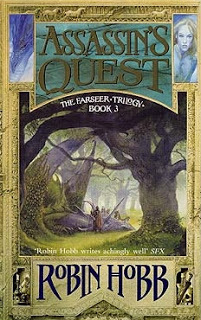 The thing with the Farseer books is that they go dark —far darker than I'd ever had fantasy go when I first seriously started reading the genre. We join Fitz at his lowest ebb. He's lost everything, the woman he loves, his position at court. He'd be a hunted criminal if it weren't for the fact that everyone believes that he's dead. As it is, he's known as the Witted Bastard, and has become something of a bogeyman used to frighten children. Yeah, so that totally sucks.
The thing with the Farseer books is that they go dark —far darker than I'd ever had fantasy go when I first seriously started reading the genre. We join Fitz at his lowest ebb. He's lost everything, the woman he loves, his position at court. He'd be a hunted criminal if it weren't for the fact that everyone believes that he's dead. As it is, he's known as the Witted Bastard, and has become something of a bogeyman used to frighten children. Yeah, so that totally sucks.
Free for the first time in his life to act with agency, Fitz chooses to avenge himself on the one who's responsible for creating the hell that has become his life – Regal, now king of the Six Duchies. And yet he's not free, for the duty laid upon him by his uncle Verity draws him to the Mountain Kingdom to aid the true heir in his mission to free the kingdom from the marauding Red Ship Raiders.
Hobb goes further to explore the relationship between Fitz and his wolf Nighteyes, in all its beautiful subtlety. Her deft strokes expand on the nature of the relationship with the enigmatic Fool, who will always be present, helping and, sometimes, hindering. Ketricken and Fitz also have a special relationship that is deep and abiding – and I dare say a true bond.
This is my second read through the book, and as expected, I missed a lot the first time and though I recalled the gist of what happens, there is so much layering to rediscover that it felt as if I were reading the story again for the first time. We are presented with the ancient mysteries of the Elderlings, the dragons, the lost magic of the stones. Our heroes sift through the ashes of a fallen civilisation, hardly understanding the artefacts that they uncover.
As always, Fitz's self-talk is heavy; he is at the end of the day his own worst enemy and he remains perhaps one of the most enduring and endearing fantasy characters I've had the pleasure of getting to know.
The Farseer books reward patient readers. I've heard folks complain that things take a long time to unfold, but I will keep saying this: nothing Hobb puts in her story goes to waste. Pay attention to every detail because, no matter how inconsequential it seems, it will invariably play an important role later.
I cannot underscore enough what an important work this is in the collective oeuvre of modern fantasy. Hobb deserves all the honours she receives for her immense contribution to this genre, and I stand forever humbled in her shadow.
 The thing with the Farseer books is that they go dark —far darker than I'd ever had fantasy go when I first seriously started reading the genre. We join Fitz at his lowest ebb. He's lost everything, the woman he loves, his position at court. He'd be a hunted criminal if it weren't for the fact that everyone believes that he's dead. As it is, he's known as the Witted Bastard, and has become something of a bogeyman used to frighten children. Yeah, so that totally sucks.
The thing with the Farseer books is that they go dark —far darker than I'd ever had fantasy go when I first seriously started reading the genre. We join Fitz at his lowest ebb. He's lost everything, the woman he loves, his position at court. He'd be a hunted criminal if it weren't for the fact that everyone believes that he's dead. As it is, he's known as the Witted Bastard, and has become something of a bogeyman used to frighten children. Yeah, so that totally sucks.Free for the first time in his life to act with agency, Fitz chooses to avenge himself on the one who's responsible for creating the hell that has become his life – Regal, now king of the Six Duchies. And yet he's not free, for the duty laid upon him by his uncle Verity draws him to the Mountain Kingdom to aid the true heir in his mission to free the kingdom from the marauding Red Ship Raiders.
Hobb goes further to explore the relationship between Fitz and his wolf Nighteyes, in all its beautiful subtlety. Her deft strokes expand on the nature of the relationship with the enigmatic Fool, who will always be present, helping and, sometimes, hindering. Ketricken and Fitz also have a special relationship that is deep and abiding – and I dare say a true bond.
This is my second read through the book, and as expected, I missed a lot the first time and though I recalled the gist of what happens, there is so much layering to rediscover that it felt as if I were reading the story again for the first time. We are presented with the ancient mysteries of the Elderlings, the dragons, the lost magic of the stones. Our heroes sift through the ashes of a fallen civilisation, hardly understanding the artefacts that they uncover.
As always, Fitz's self-talk is heavy; he is at the end of the day his own worst enemy and he remains perhaps one of the most enduring and endearing fantasy characters I've had the pleasure of getting to know.
The Farseer books reward patient readers. I've heard folks complain that things take a long time to unfold, but I will keep saying this: nothing Hobb puts in her story goes to waste. Pay attention to every detail because, no matter how inconsequential it seems, it will invariably play an important role later.
I cannot underscore enough what an important work this is in the collective oeuvre of modern fantasy. Hobb deserves all the honours she receives for her immense contribution to this genre, and I stand forever humbled in her shadow.
Published on September 05, 2016 13:05
August 25, 2016
Dealbreakers: Yes, we judge your book by its cover
I hear, “My friend designed my book cover,” or “I designed my book cover using MS Word, what do you think?”
As someone who’s been immersed in the media industry since she first crawled out of her Spur waiter apron, I *cringe* when I hear these words.
Thing is, you can have written the Best Book Eva, but if the cover makes me feel too embarrassed to be seen within a twenty metre radius of your voluminous tome, then, Houston, we have a problem.
There’s that wonderful adage about not judging books by their covers but we all know that’s a stinking pile of camel turds. Your book’s cover will be the first thing that catches a person’s eye, and I’m going to make you very sad by saying that the first time people see your book cover it will most likely be a teeny-tiny thumbnail-sized image on a vendor’s website and not in prime shelf position in a swanky bookstore. So it becomes even more critical to design with that in mind even before you start having a thromby over what you want on your cover.
A cover doesn’t tell the entire story in one picture, it communicates the essence or theme of your novel. For instance (and excuse me while I gag) there’s a reason why a large percentage of African literature dressed up for the international market will have a glorious sunset with thorn trees in the background. It screams Africa. Even if the novel only has something vaguely to do with the bushveld. The publisher wants to immediately tell a potential reader that LOOK HERE IS A BOOK ABOUT AFRICA.
It sucks. But it is industry standard.
Think about the recent explosion of GrimDark fantasy. How many of those covers have a Bloke in a Cloak on the front cover. Or romance and erotica covers that have the prerequisite headless male torso?
A book cover gives you *seconds* to snag a reader’s attention. If they’re already attuned to a specific genre and your cover’s style matches, chances are better that they’ll bother to read the blurb. (Pay attention, I may repeat this later on because it's fucking important.)
But I’m going to digress a moment. Bear with me. With the advent of modern technology getting all spiffy like, I’ve seen an alarming increase of the use of CGI modelling for the people used on covers. My word: DO NOT DO IT.
NO CGI. NO. NOT EVEN A LITTLE BIT.
Why? I promise you, it looks like shit. Really. It looks like crap. It makes your novel look like a bad video game from the late 1990s. Don’t believe me? Just feast your eyes on this hot mess. Then thank me for talking you out of it.
But let’s get back to style, shall we, because that’s the catch. Every genre, be it a thriller, a whodunnit, military SF, romance or YA dystopias, has a range of styles in cover art that will appear within a genre. Your romance novels tend to have photo-manipulated images featuring torsos, wolves etc to give a quick, dirty hint that we’re dealing with a ménage à trois vs. shifter romances. Fantasy novels tend to have one or two heroic figures (and of late, the near-ubiquitous a Bloke in a Cloak) in a near-realistic illustrative style. Literary novels often feature stylised illustrations related to the theme of the novel. Colour is important too – bright, primary colours often feature in children’s books while horror novels may go for plenty of dark tones with flashes of lurid red to catch the eye.
Effective nonverbal communication encapsulated in your (hopefully) awesome cover art might mean the difference between a potential reader continuing with their desultory scan of a selection of works vs. them slowing down to read the blurb and check out the reviews of your novel. A cover that differs from its brethren in horribad way, will reflect your novel in a poor light. (Well, if the cover looks like it was shat out by a goat with chronic diarrhoea, the writing can’t be much better, amiright?)
If you’re an indie author, it’s even more important that your cover matches the standards of its traditionally published brethren. At a glance, your book must appear no different. Which means you need to take a good stab at emulating the style of illustration and typographical treatment of your competitors (who often have considerable budgets). And that will extend not only to the style of the artwork and design, but also to the subject matter.
If you’re writing about a kick-ass heroine with a magic sword, chances are extremely high that you’re going to have a sexy, bad-ass lady on the front cover standing in some epic pose with a drawn blade on a cliff. The artwork must scream EPIC in big letters. Likewise, if you’re writing a sweet romance, you will in all likelihood opt for a fully clothed couple looking all lovey-dovey comped into some sort of pastel-shaded landscape. With doves. And pretty flowers.
Okay. Enough of that. [Stomps on fairies]
Resist the temptation to try show the entire story or a key scene from the novel (unless it's a shit-hot key scene that just yodels cinematic oomph – like omigod they're all gonna get eaten by that there dragon). At best, you’re aiming for is mood and theme, and the image on the front cover may not necessarily even take place in the novel. You may even opt to go for something completely abstract – for instance an Indiana Jones-style adventure thriller might have a map and an ancient artefact on the cover, with the typography. The two items already communicate the essence of what the novel is about without having to resort to using human figures.
Not quite sure what you want? LOOK at a dozen books that are similar to what yours is. See what they share in common. Figure out what you’ll need to match it.
At the very basic, you need a) an image, b) a graphic designer with experience in book cover design. (Later on you may get kinky enough to hire your own photographer and creative director, mkay?)
Now, where do you get your images?
First of all, let’s talk about where you DON’T get your images. If you want to get yourself into a world of trouble, you’ll download and use images off Google willy nilly. This is stealing. Don’t do it. You really, really don’t want to taint your name in this reputation-based business by stealing another artist’s hard work. DON'T BE A DICK, IOW.
If you need visuals, you can purchase the rights to use royalty-free images from sites such as iStock, Shutterstock or Adobe. And it’s really not that expensive. One image can cost anywhere from $30 upwards. These sites will have photos, illustrations and vector graphics – so if it’s something you need for a comped image or that you’re happy to use ready made, there’s a lot to look through.
If you decide to go with an illustrator, there are loads of really talented people you can find on sites like Behance or deviantArt. Take time to browse and be sure when you eventually engage with them that their art matches your final vision closely.
When you negotiate, set your terms. Some artists may want a 50% upfront with balance paid on sign-off. Do discuss a kill fee. This protects both of you in case things don’t work out so you don’t feel obliged to pay for something that doesn’t work and the artist still has some compensation for their time. Provide your artist with a comprehensive brief – so this is a full description of characters, poses. Supply examples of the cover art you’re trying to emulate, the mood. Even pictures of clothing, people who resemble your characters, backgrounds, props – all this is gold for your artist and will help them meet your vision halfway. Make sure to tell your artist what size you require – I usually brief in at A4 for 300dpi but comic book artists I’ve spoken to will work at about A4 at 600dpi. Don’t worry if you don’t understand the terms too well – suffice to say that we’re talking about page size and the amount of dots per inch (resolution) of image. You don’t want small images on your cover that look blurry and pixelated. Oh, and discuss a deadline. That's important too.
Once you have your final, signed-off image, be it a photo manipulation, photo or illustration, you’ll go speak to your graphic designer (though some graphic designers do offer photo manipulation services, so be sure to ask). You’ll brief them thoroughly too, showing them examples of those other book covers you’re trying to outshine. You'll also take a gander at their creative portfolio to be sure that they'll be up to the task. You’ll talk to them about the end product and supply them with the technical specifications for the print and ebook covers (which you should be able to get from your vendor’s site). You’ll make damned sure that they have all the information they need so that all you’ll need to do is upload that file without any complications. But as you would with an illustrator, for the love of dog, find a professional who has the right equipment and experience for the work. Don’t ask your cousin’s boyfriend or your best friend’s neighbour who allegedly knows a thing or two about CorelDRAW.
I said CorelDRAW. Ugh.
You want a professional-looking cover. This means you’re playing publisher and taking the financial risk for a product that looks awesome. Unfortunately this does mean you’ll need to spend money. Don’t cut corners.
And, unless you’re actually already employed in the media industry with years and years of experience with the relevant apps, don’t try to do it yourself. Therein lies only pain, unless you can be completely honest about your attempts and invest hours and hours until you get the fucking thing right. (And let’s be honest, most folks won’t be able to tell when their design is shit.)
So my advice here is SPEND THE FUCKING MONEY. Get it done properly, by professionals. The first time.
My experiences with small presses have been mixed. Most small presses with which I’ve published have skimped on design, and if you look at my earlier book covers, it tells. A great illustration looks like shit when the typography is half-arsed. Yet every time I coughed up the dough or pulled in favours with the right people, I ended up with something awesome. (Though I’m really fortunate that my lovely husband is a shit-hot designer, and occasionally I can twist his arm to get him to help me out with cover art.)
What this means from here on in is that I’m no longer going to put myself at the mercy of others. I am ready to drop hundreds of dollars to pay the right artists to get the job done so I don’t end up cringing when I see my older books.
You owe it to yourself to avoid your novel from showing up on this Tumblr.
And if you’re looking for help with your book cover, feel free to contact me at nerine@helicopterdesign.co.za. Chat to me about what you need, what your budget is, and I’m happy to advise and quote, and put you in touch with illustrators and photographers, and have my lovely husband design something super awesome for you. I won't break your piggy bank. And I won't sugarcoat my opinion either.
A small selection of our work...
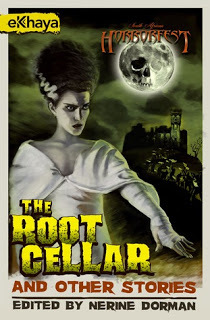 Illustration & design, Thomas Dorman
Illustration & design, Thomas Dorman
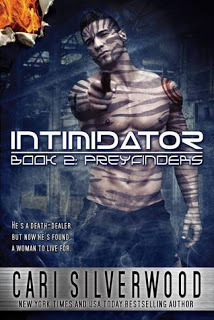 Image retouching & design, Thomas Dorman
Image retouching & design, Thomas Dorman
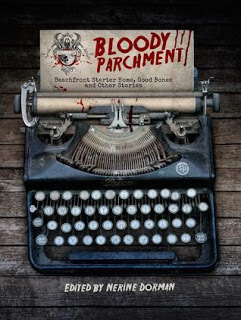 Image retouching & design, Thomas Dorman
Image retouching & design, Thomas Dorman
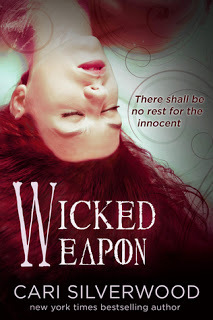 Image retouching & design, Thomas Dorman
Image retouching & design, Thomas Dorman
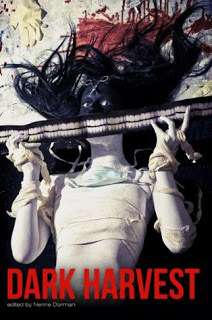 Photography & image manipulation,
Photography & image manipulation,
Thomas Dorman
 Image manipulation & design,
Image manipulation & design,
Thomas Dorman
As someone who’s been immersed in the media industry since she first crawled out of her Spur waiter apron, I *cringe* when I hear these words.
Thing is, you can have written the Best Book Eva, but if the cover makes me feel too embarrassed to be seen within a twenty metre radius of your voluminous tome, then, Houston, we have a problem.
There’s that wonderful adage about not judging books by their covers but we all know that’s a stinking pile of camel turds. Your book’s cover will be the first thing that catches a person’s eye, and I’m going to make you very sad by saying that the first time people see your book cover it will most likely be a teeny-tiny thumbnail-sized image on a vendor’s website and not in prime shelf position in a swanky bookstore. So it becomes even more critical to design with that in mind even before you start having a thromby over what you want on your cover.
A cover doesn’t tell the entire story in one picture, it communicates the essence or theme of your novel. For instance (and excuse me while I gag) there’s a reason why a large percentage of African literature dressed up for the international market will have a glorious sunset with thorn trees in the background. It screams Africa. Even if the novel only has something vaguely to do with the bushveld. The publisher wants to immediately tell a potential reader that LOOK HERE IS A BOOK ABOUT AFRICA.
It sucks. But it is industry standard.
Think about the recent explosion of GrimDark fantasy. How many of those covers have a Bloke in a Cloak on the front cover. Or romance and erotica covers that have the prerequisite headless male torso?
A book cover gives you *seconds* to snag a reader’s attention. If they’re already attuned to a specific genre and your cover’s style matches, chances are better that they’ll bother to read the blurb. (Pay attention, I may repeat this later on because it's fucking important.)
But I’m going to digress a moment. Bear with me. With the advent of modern technology getting all spiffy like, I’ve seen an alarming increase of the use of CGI modelling for the people used on covers. My word: DO NOT DO IT.
NO CGI. NO. NOT EVEN A LITTLE BIT.
Why? I promise you, it looks like shit. Really. It looks like crap. It makes your novel look like a bad video game from the late 1990s. Don’t believe me? Just feast your eyes on this hot mess. Then thank me for talking you out of it.
But let’s get back to style, shall we, because that’s the catch. Every genre, be it a thriller, a whodunnit, military SF, romance or YA dystopias, has a range of styles in cover art that will appear within a genre. Your romance novels tend to have photo-manipulated images featuring torsos, wolves etc to give a quick, dirty hint that we’re dealing with a ménage à trois vs. shifter romances. Fantasy novels tend to have one or two heroic figures (and of late, the near-ubiquitous a Bloke in a Cloak) in a near-realistic illustrative style. Literary novels often feature stylised illustrations related to the theme of the novel. Colour is important too – bright, primary colours often feature in children’s books while horror novels may go for plenty of dark tones with flashes of lurid red to catch the eye.
Effective nonverbal communication encapsulated in your (hopefully) awesome cover art might mean the difference between a potential reader continuing with their desultory scan of a selection of works vs. them slowing down to read the blurb and check out the reviews of your novel. A cover that differs from its brethren in horribad way, will reflect your novel in a poor light. (Well, if the cover looks like it was shat out by a goat with chronic diarrhoea, the writing can’t be much better, amiright?)
If you’re an indie author, it’s even more important that your cover matches the standards of its traditionally published brethren. At a glance, your book must appear no different. Which means you need to take a good stab at emulating the style of illustration and typographical treatment of your competitors (who often have considerable budgets). And that will extend not only to the style of the artwork and design, but also to the subject matter.
If you’re writing about a kick-ass heroine with a magic sword, chances are extremely high that you’re going to have a sexy, bad-ass lady on the front cover standing in some epic pose with a drawn blade on a cliff. The artwork must scream EPIC in big letters. Likewise, if you’re writing a sweet romance, you will in all likelihood opt for a fully clothed couple looking all lovey-dovey comped into some sort of pastel-shaded landscape. With doves. And pretty flowers.
Okay. Enough of that. [Stomps on fairies]
Resist the temptation to try show the entire story or a key scene from the novel (unless it's a shit-hot key scene that just yodels cinematic oomph – like omigod they're all gonna get eaten by that there dragon). At best, you’re aiming for is mood and theme, and the image on the front cover may not necessarily even take place in the novel. You may even opt to go for something completely abstract – for instance an Indiana Jones-style adventure thriller might have a map and an ancient artefact on the cover, with the typography. The two items already communicate the essence of what the novel is about without having to resort to using human figures.
Not quite sure what you want? LOOK at a dozen books that are similar to what yours is. See what they share in common. Figure out what you’ll need to match it.
At the very basic, you need a) an image, b) a graphic designer with experience in book cover design. (Later on you may get kinky enough to hire your own photographer and creative director, mkay?)
Now, where do you get your images?
First of all, let’s talk about where you DON’T get your images. If you want to get yourself into a world of trouble, you’ll download and use images off Google willy nilly. This is stealing. Don’t do it. You really, really don’t want to taint your name in this reputation-based business by stealing another artist’s hard work. DON'T BE A DICK, IOW.
If you need visuals, you can purchase the rights to use royalty-free images from sites such as iStock, Shutterstock or Adobe. And it’s really not that expensive. One image can cost anywhere from $30 upwards. These sites will have photos, illustrations and vector graphics – so if it’s something you need for a comped image or that you’re happy to use ready made, there’s a lot to look through.
If you decide to go with an illustrator, there are loads of really talented people you can find on sites like Behance or deviantArt. Take time to browse and be sure when you eventually engage with them that their art matches your final vision closely.
When you negotiate, set your terms. Some artists may want a 50% upfront with balance paid on sign-off. Do discuss a kill fee. This protects both of you in case things don’t work out so you don’t feel obliged to pay for something that doesn’t work and the artist still has some compensation for their time. Provide your artist with a comprehensive brief – so this is a full description of characters, poses. Supply examples of the cover art you’re trying to emulate, the mood. Even pictures of clothing, people who resemble your characters, backgrounds, props – all this is gold for your artist and will help them meet your vision halfway. Make sure to tell your artist what size you require – I usually brief in at A4 for 300dpi but comic book artists I’ve spoken to will work at about A4 at 600dpi. Don’t worry if you don’t understand the terms too well – suffice to say that we’re talking about page size and the amount of dots per inch (resolution) of image. You don’t want small images on your cover that look blurry and pixelated. Oh, and discuss a deadline. That's important too.
Once you have your final, signed-off image, be it a photo manipulation, photo or illustration, you’ll go speak to your graphic designer (though some graphic designers do offer photo manipulation services, so be sure to ask). You’ll brief them thoroughly too, showing them examples of those other book covers you’re trying to outshine. You'll also take a gander at their creative portfolio to be sure that they'll be up to the task. You’ll talk to them about the end product and supply them with the technical specifications for the print and ebook covers (which you should be able to get from your vendor’s site). You’ll make damned sure that they have all the information they need so that all you’ll need to do is upload that file without any complications. But as you would with an illustrator, for the love of dog, find a professional who has the right equipment and experience for the work. Don’t ask your cousin’s boyfriend or your best friend’s neighbour who allegedly knows a thing or two about CorelDRAW.
I said CorelDRAW. Ugh.
You want a professional-looking cover. This means you’re playing publisher and taking the financial risk for a product that looks awesome. Unfortunately this does mean you’ll need to spend money. Don’t cut corners.
And, unless you’re actually already employed in the media industry with years and years of experience with the relevant apps, don’t try to do it yourself. Therein lies only pain, unless you can be completely honest about your attempts and invest hours and hours until you get the fucking thing right. (And let’s be honest, most folks won’t be able to tell when their design is shit.)
So my advice here is SPEND THE FUCKING MONEY. Get it done properly, by professionals. The first time.
My experiences with small presses have been mixed. Most small presses with which I’ve published have skimped on design, and if you look at my earlier book covers, it tells. A great illustration looks like shit when the typography is half-arsed. Yet every time I coughed up the dough or pulled in favours with the right people, I ended up with something awesome. (Though I’m really fortunate that my lovely husband is a shit-hot designer, and occasionally I can twist his arm to get him to help me out with cover art.)
What this means from here on in is that I’m no longer going to put myself at the mercy of others. I am ready to drop hundreds of dollars to pay the right artists to get the job done so I don’t end up cringing when I see my older books.
You owe it to yourself to avoid your novel from showing up on this Tumblr.
And if you’re looking for help with your book cover, feel free to contact me at nerine@helicopterdesign.co.za. Chat to me about what you need, what your budget is, and I’m happy to advise and quote, and put you in touch with illustrators and photographers, and have my lovely husband design something super awesome for you. I won't break your piggy bank. And I won't sugarcoat my opinion either.
A small selection of our work...
 Illustration & design, Thomas Dorman
Illustration & design, Thomas Dorman Image retouching & design, Thomas Dorman
Image retouching & design, Thomas Dorman Image retouching & design, Thomas Dorman
Image retouching & design, Thomas Dorman
 Image retouching & design, Thomas Dorman
Image retouching & design, Thomas Dorman Photography & image manipulation,
Photography & image manipulation,Thomas Dorman
 Image manipulation & design,
Image manipulation & design,Thomas Dorman
Published on August 25, 2016 12:53
August 21, 2016
Indiana Jones and the Kingdom of the Crystal Skull (2008) #reviews
Famed archaeologist/adventurer Dr. Henry "Indiana" Jones is called back into action when he becomes entangled in a Soviet plot to uncover the secret behind mysterious artifacts known as the Crystal Skulls.
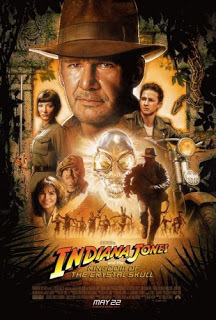 Concluding our epic revisiting of the Indiana Jones franchise, we reached Indiana Jones and the Kingdom of the Crystal Skull. Since a fair amount of time passed in real life, this is reflected in Crystal Skull. We hook up with a much older, much more reflective Indy in his autumn years. That being said, he still possesses a typical Indy habit of landing himself in hot water.
Concluding our epic revisiting of the Indiana Jones franchise, we reached Indiana Jones and the Kingdom of the Crystal Skull. Since a fair amount of time passed in real life, this is reflected in Crystal Skull. We hook up with a much older, much more reflective Indy in his autumn years. That being said, he still possesses a typical Indy habit of landing himself in hot water.
This time the Soviets have replaced the Nazis as villains, and we find ourselves in a milieu in the grips of the Cold War, set up against the deliciously evil Dr Spalko (played by Cate Blanchett, who remains one of my favourite actors).
While McGuffins present in previous films were of a sacred nature (the Ark of the Covenant, holy stones, Holy Grail) the object everyone's gasping after this time is a crystal skull pilfered from a Native American tomb. What follows is a typical wild race to a location filled with hostile natives, traps and certain death.
What I loved about this film is that it refers back to previous instalments by bringing Indy back with the indomitable Marion Ravenwood (Karen Allen) from Raiders and some fresh daredevil blood with Mutt Williams (Shia LaBeouf). There's a shift in dynamics since Indy isn't quite as spry as he used to be, so Mutt is there to play active sidekick.
I was prepared not to like this film – after all, how often can you reprise the same characters until the Law of Too Much Awesome kicks in. I'm not going to lie – the ending was epic, and most certainly *not* what I expected – but I enjoyed the ride and the film held a solid internal consistency. There's nothing higher grade with an Indiana Jones film. It's action. It's humorous dialogue. Granted, a few of the gags were just downright awful (the scene involving quick sand and the snake rope – I was like, nope, that's really the kind of humour you'd expect to entertain a five-year-old) but overall the movie engaged me, made me smile and scratched the right itches I have for an Indy film.
The epilogue was suitably heartwarming and tied up enough "happy for nows", and they *could* have left well enough alone there with Indy's stories and have been fine, but yeah *sigh* ... they're busy with Indiana Jones 5 with Harrison Ford ... And I'll be honest, I'm dubious on whether it's right or whether it's practical for them to do this. Crystal Skull is a perfect stopping place. If anything, breathe fresh air into the franchise by telling the story of his granddaughter, if Disney absolute has to. I pray (and this is something that may even drive me to feeling slightly religious) that the screenwriters don't fuck this up. PLEASE don't fuck this up. I've a soft spot for my favourite professor. He's getting old and creaky, and I'd like his story to end well, without it becoming cringe-worthy.
If you've been enjoying my reviews or my blog, do consider stalking following me on Twitter if you don't already do so and, for those who enjoy SFF stories, your support on Patreon will mean the world to me and help me continue to craft great tales.
 Concluding our epic revisiting of the Indiana Jones franchise, we reached Indiana Jones and the Kingdom of the Crystal Skull. Since a fair amount of time passed in real life, this is reflected in Crystal Skull. We hook up with a much older, much more reflective Indy in his autumn years. That being said, he still possesses a typical Indy habit of landing himself in hot water.
Concluding our epic revisiting of the Indiana Jones franchise, we reached Indiana Jones and the Kingdom of the Crystal Skull. Since a fair amount of time passed in real life, this is reflected in Crystal Skull. We hook up with a much older, much more reflective Indy in his autumn years. That being said, he still possesses a typical Indy habit of landing himself in hot water.This time the Soviets have replaced the Nazis as villains, and we find ourselves in a milieu in the grips of the Cold War, set up against the deliciously evil Dr Spalko (played by Cate Blanchett, who remains one of my favourite actors).
While McGuffins present in previous films were of a sacred nature (the Ark of the Covenant, holy stones, Holy Grail) the object everyone's gasping after this time is a crystal skull pilfered from a Native American tomb. What follows is a typical wild race to a location filled with hostile natives, traps and certain death.
What I loved about this film is that it refers back to previous instalments by bringing Indy back with the indomitable Marion Ravenwood (Karen Allen) from Raiders and some fresh daredevil blood with Mutt Williams (Shia LaBeouf). There's a shift in dynamics since Indy isn't quite as spry as he used to be, so Mutt is there to play active sidekick.
I was prepared not to like this film – after all, how often can you reprise the same characters until the Law of Too Much Awesome kicks in. I'm not going to lie – the ending was epic, and most certainly *not* what I expected – but I enjoyed the ride and the film held a solid internal consistency. There's nothing higher grade with an Indiana Jones film. It's action. It's humorous dialogue. Granted, a few of the gags were just downright awful (the scene involving quick sand and the snake rope – I was like, nope, that's really the kind of humour you'd expect to entertain a five-year-old) but overall the movie engaged me, made me smile and scratched the right itches I have for an Indy film.
The epilogue was suitably heartwarming and tied up enough "happy for nows", and they *could* have left well enough alone there with Indy's stories and have been fine, but yeah *sigh* ... they're busy with Indiana Jones 5 with Harrison Ford ... And I'll be honest, I'm dubious on whether it's right or whether it's practical for them to do this. Crystal Skull is a perfect stopping place. If anything, breathe fresh air into the franchise by telling the story of his granddaughter, if Disney absolute has to. I pray (and this is something that may even drive me to feeling slightly religious) that the screenwriters don't fuck this up. PLEASE don't fuck this up. I've a soft spot for my favourite professor. He's getting old and creaky, and I'd like his story to end well, without it becoming cringe-worthy.
If you've been enjoying my reviews or my blog, do consider stalking following me on Twitter if you don't already do so and, for those who enjoy SFF stories, your support on Patreon will mean the world to me and help me continue to craft great tales.
Published on August 21, 2016 06:51
August 20, 2016
A Letter Home by Winter Wren (Celt Mom) #reviews #fanfiction
Okay, I've decided to start reviewing fanfiction because of late I've been finding stories that really work for me on many levels. What I discover in the fics that I love is that they take the usual tropes and put a spin on them that is memorable.
A Letter Home
by Winter Wren (over at AO3) has hit me in the feels. There're a lot of Dragon Age Inquisitor fics doing the rounds that are basically a retelling of DA:I from the Quizzy's point of view, and yes, all too often they're female Lavellan getting it on with a certain bald apostate hobo elf, so what Winter Wren has done has been fresh – for me, at least.
(Hey, I'm guilty as charged with writing mainly Solavellan smut, but jawellnofine, this is fanfiction we're talking about.)
Okay. So, I'm no huge fan of The Iron Bull. I appreciate him as a character, and as Patrick Weekes said in this most excellent interview that I totally recommend listening to, it would have been so easy to make Bull really one-dimensional. And yet ... He is a character who has surprising depth beneath that tough façade. Unfortunately he just never blew my hair back (though I admit that I had the horrible feels at the end of my second run through the Trespasser DLC, and now I will forever feel bad for all the Vashoth running around southern Thedas post-Trespasser in that particular version of the game).
And I so didn't see myself reading an entire fic featuring a Bull romance with a Vashoth Quizzy, but there you have it. I pretty much ate through and loved all of A Letter Home, even though it didn't truly cover fresh ground considering it's a reconstruction of the main game narrative.
Yet Winter Wren does absolutely amazeballs OCs. Her characterisation is beautiful, and she seamlessly blends in backstory in such a way to flesh out her characters without resorting to reams of exposition. Anaan Adaar (the Quizzy's father as wonderful secondary character) and Inquisition agent Turner's moments together are priceless – the unlikely friendship warms my heart. I particularly loved how Anaan interacted with Varric over an evening of Wicked Grace (I'd been dying to see the two hang out since the beginning of the story). My inner editor did very little twitching (as in I was more than happy to overlook a few bumps because the writing is so smooth), and in fact I'd happily say here is one fic writer who could most certainly file off the serial numbers and give it a go writing novels. Dialogue as well, between characters, is lively and sparkling, and had me chuckling at a number of points. (Note to authors, yes, characters can make off-colour jokes from time to time, and embarrass each other, or tease, and it's fun, and makes things feel more authentic.)
Essentially, this is the story about Bull coming to terms with his life after the Qun, and Meraad Adaar getting a handle on her role as Inquisitor while also processing issues from her past and finding love in a most unexpected way. The two together make a beautiful couple and yes, this is heavier on the romance angle, but the action sequences (especially the dragon hunt in the Hinterlands) are solidly executed.
There is more, and I'm looking forward to the other stories.
Note:
I will be reviewing more fanfiction as I go along, but my preference is for IPs that I'm familiar with and stories that resonate with me, mostly Middle-Earth and Dragon Age; and as such, I am not open to queries to read stories.
(Hey, I'm guilty as charged with writing mainly Solavellan smut, but jawellnofine, this is fanfiction we're talking about.)
Okay. So, I'm no huge fan of The Iron Bull. I appreciate him as a character, and as Patrick Weekes said in this most excellent interview that I totally recommend listening to, it would have been so easy to make Bull really one-dimensional. And yet ... He is a character who has surprising depth beneath that tough façade. Unfortunately he just never blew my hair back (though I admit that I had the horrible feels at the end of my second run through the Trespasser DLC, and now I will forever feel bad for all the Vashoth running around southern Thedas post-Trespasser in that particular version of the game).
And I so didn't see myself reading an entire fic featuring a Bull romance with a Vashoth Quizzy, but there you have it. I pretty much ate through and loved all of A Letter Home, even though it didn't truly cover fresh ground considering it's a reconstruction of the main game narrative.
Yet Winter Wren does absolutely amazeballs OCs. Her characterisation is beautiful, and she seamlessly blends in backstory in such a way to flesh out her characters without resorting to reams of exposition. Anaan Adaar (the Quizzy's father as wonderful secondary character) and Inquisition agent Turner's moments together are priceless – the unlikely friendship warms my heart. I particularly loved how Anaan interacted with Varric over an evening of Wicked Grace (I'd been dying to see the two hang out since the beginning of the story). My inner editor did very little twitching (as in I was more than happy to overlook a few bumps because the writing is so smooth), and in fact I'd happily say here is one fic writer who could most certainly file off the serial numbers and give it a go writing novels. Dialogue as well, between characters, is lively and sparkling, and had me chuckling at a number of points. (Note to authors, yes, characters can make off-colour jokes from time to time, and embarrass each other, or tease, and it's fun, and makes things feel more authentic.)
Essentially, this is the story about Bull coming to terms with his life after the Qun, and Meraad Adaar getting a handle on her role as Inquisitor while also processing issues from her past and finding love in a most unexpected way. The two together make a beautiful couple and yes, this is heavier on the romance angle, but the action sequences (especially the dragon hunt in the Hinterlands) are solidly executed.
There is more, and I'm looking forward to the other stories.
Note:
I will be reviewing more fanfiction as I go along, but my preference is for IPs that I'm familiar with and stories that resonate with me, mostly Middle-Earth and Dragon Age; and as such, I am not open to queries to read stories.
Published on August 20, 2016 15:09



